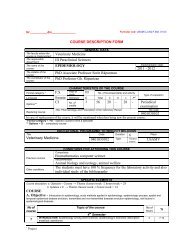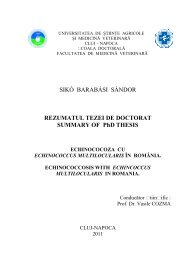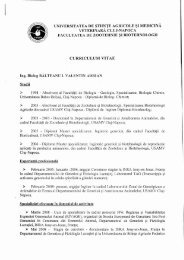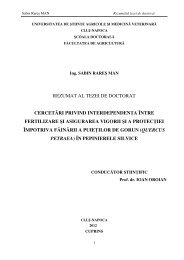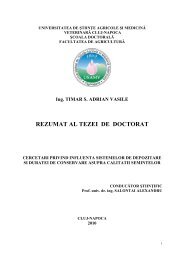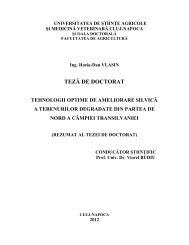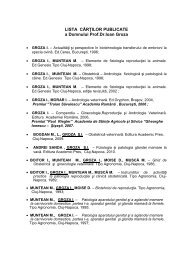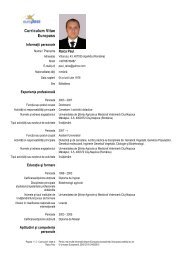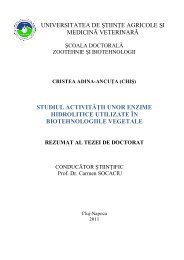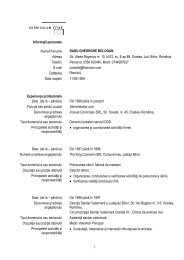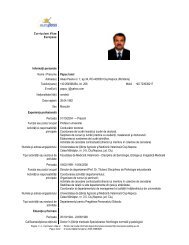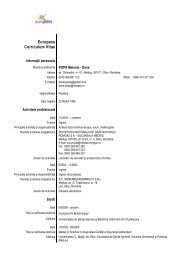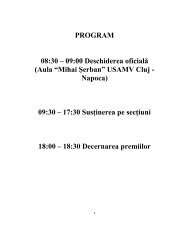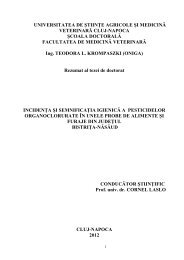Rezumatul tezei de doctorat - USAMV Cluj-Napoca
Rezumatul tezei de doctorat - USAMV Cluj-Napoca
Rezumatul tezei de doctorat - USAMV Cluj-Napoca
You also want an ePaper? Increase the reach of your titles
YUMPU automatically turns print PDFs into web optimized ePapers that Google loves.
extraction have values between 1,10 – 1,51, with an average of 1,394, at 260/280 nm<br />
ripple length, and the DNA quantities obtained by the same method, varied between<br />
5,23 – 86,56 ng/µl, with an average of 30,653 ng/µl.<br />
8. In the case of DNA samples extracted with kit QIAGEN, in all the situations the<br />
amplification produced with both primer pairs used, with the visualization of 743 bp<br />
fragments at Saprolegnia ferax, and of 761 bp at Achlya bisexualis.<br />
9. In the case of the DNA samples extracted with PBS solutions, in spite of the normal<br />
DNA purities and quantities, the amplification of Saprolegnia DNA samples, with the<br />
two primer pairs, produced differently, because of the presence of possible fungal<br />
inhibitors, which do not allow the attachment of ITS1 and ITS4 primer pair, and in<br />
the case of using a PCR purification kit, the amplification performed.<br />
10. In the case of the samples extracted with NE solutions, in spite of the normal purities<br />
and quantities, the amplification of Saprolegnia DNA samples, with the two primer<br />
pairs didn’t produced.<br />
11. RsaI enzyme has a very good specificity for Saprolegnia and Achlya restriction sites,<br />
so we opted for its usage in all the fragment restriction tests.<br />
12. AluI and HindIII enzymes, tested by us in the experiment, do not have any specificity<br />
for Saprolegnia and Achlya restriction sites, failing to produce any restricion of the<br />
DNA fragments.<br />
13. In the case of the 10 fisheries and 69 samples analyzed, there are visualized two DNA<br />
length polymorphisms, in the gels.<br />
14. The study of phylogenetic tree, using linkage and Eucli<strong>de</strong>an distances, allows us to<br />
conclu<strong>de</strong> the fact that in the studied fisheries and fishponds, there are different genera<br />
of fungi from Saprolegniaceae family, which have different pathogenicity upon<br />
cyprinid species.<br />
15. After the DNA sequencing, there were i<strong>de</strong>ntified two species of aquatic fungi, in the<br />
studied fishponds, represented by Saprolegnia ferax (743 bp, a i<strong>de</strong>ntity of 99% and<br />
has two point mutations compared to the matrix species from GeneBank) and Achlya<br />
73



